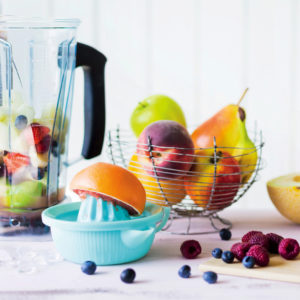Confused by culinary jargon like emulsify, julienne, dredge, and bloom? This article is your ultimate map to navigate through the culinary maze and unravel the mystery behind these terms and more.
Struggling to decipher fancy cooking terms? We give you the what and the why behind them… simply knowing their purpose can change the way you cook completely.
1. In the pan
Deglaze
Adding liquid to a hot pan to soften and lift the food bits stuck to the bottom (usually when making a stew, sauce, curry or soup). Those bits of flavour are incorporated into the sauce. It can be done with most liquids such as wine, beer, juice, vinegar or stock – these should be added either cold or room temperature.
They will add their own taste to deepen your dish – red wine pairs with red meat, stock is good for vegetarian dishes and soups, while vinegar adds a lovely light bitterness to your sauce.
Dry fry
This involves adding spices to a dry, hot pan and toasting them briefly before adding liquid. This unlock their full flavour.
Baste
To prevent drying out and to boost flavour, basting is the action of brushing food with fat, sauce or marinade while cooking. Think of brushing a steak with melted garlic butter at the end of cooking, or basting pork ribs with a soy marinade every 20 minutes while in the oven. These flavours infuse into the meat, tenderising and deepening the nuances.
2. In the pot
Al dente
The term for pasta cooked until almost tender, but still with a slight bite to it.
Bain-marie
Also known as a double boiler, this is a setup where a pot filled 1/3 with water is covered with a second bigger pot or bowl. The simmering (not boiling) water below heats the pot above, resulting in a slow-cook of the contents. This can be used to melt chocolate without burning, to make a custard or even fluffy sponge cakes.
Blanch
We use this technique often! It’s the action of submerging fruit or vegetables into boiling water for a few seconds before transferring them to an ice bath. This preserves the colour and flavour.
Coulis vs compote:
Both are made from fruit, sugar and lemon to taste. A coulis is a smooth cooked sauce that has been puréed and strained, whereas a compote is a sauce that still contains chunks of fruit.
Curdle/split
When egg or dairy-based sauces or dishes are cooked at too high of a heat or too quickly, resulting in either: the milk curds separating from the whey or the egg protein cooking and scrambling. Once split, the mixture can’t come back together, or will be grainy.
3. On the chopping board
Rough chop
Cutting ingredients into broad and varied sizes.
Finely chop/dice
Cutting food into smaller, uniform cubes.
Mince
Best for aromatics like garlic or ginger, this calls for food to be chopped very finely, almost resembling a paste. Chicken, pork and lamb and beer are minced to create sausages, meat mince or burger patties.
Julienne
Calls for slicing ingredients into long, thin and uniform matchstick-shaped pieces.
Bruise
To gently crush an ingredient, such as fruit, herbs, garlic or whole spices, to release flavour before infusing or cooking. Use a pestle and mortar or blade.
Dredge
To add moist food to a dry ingredient, such as a flour coating, before baking or frying.
Hasselback
To thinly slice veggies ¾ of the way through and leaving the bottom piece intact. This creates slices anchored to the bottom of the veggie. Garlic, herbs or butter can be wedged in between each piece. Veggies like carrots, potatoes beetroot or parsnips can be cut in this style.
Curl
Use a vegetable peeler to peel veggies or fruit into curls. Peel celery, carrots or cucumber finely, add to a bowl of ice water and watch them curl. Use a small sharp knife to cut very thin slices of spring onion, which will also curl in ice water.
Tomato concassé
This involves preparing tomatoes to be used in sauce and stews. Core the tomatoes and score an “x” over the base of each. Boil a pot of water and prepare a large bowl of ice water. Add tomatoes to boiling water and blanch until the skins begin to peel away (20-40 seconds).
Remove and put into the ice water. Cool for a few minutes then peel away the skins. Slice the tomatoes open on the diagonal, scoop out the seeds, chop up the flesh and add to a sauce or stew.
4. For the bakers
Emulsify
Combining two ingredients that normally don’t mix easily (usually a fat like oil and a liquid like water) to form a thick, smooth consistency. A method of whisking, blending or beating is used to mix the ingredients together, suspending the fat within the water.
In mayonnaise, egg yolks are blended with oil, vinegar and other ingredients to form a thick creamy mixture. Other examples include ice cream, chocolate ganache and pesto.
In ice cream, the egg proteins that combine with the cream and sugar help to keep the crystals in the ice cream small and create a creamy dessert. When chocolate ganache is made, cream and chocolate are heated and whisked together to create a smooth and thick spreadable coating, and with pesto, the water from the basil leaves blends with the added oil to create a delicate paste.
Knead
The process of working dough with the heel of your hands by pushing, pulling and folding the dough over itself to create a smooth and elastic form. This process develops the gluten within the dough, resulting in a light leavened bread.
Fold
We all know how to fold, but sometimes we turn to autopilot when making something like a cake or batter. The goal of folding is to retain as much air as possible in the mixture while incorporating everything to prevent random lumps of unmixed ingredients. The perfect tools to help are large metal spoons and spatulas. They both “fold” the batter in on itself to gently combine everything together.
Hull/core
To remove the green stem, husk or shell of a food (usually a fruit or nut) by cutting, toasting or blanching it. For strawberries, use a small, serrated knife to cut a conical shape around and down the green leafy stem. Pull this out and you have a hulled strawberry!
Bloom
This process involves soaking the powder or sheets of gelatine in cold water for 10-20 minutes before heating to dissolve and use. The soaking makes the gelatine melt more easily when heated, resulting in a smooth and creamy set product.
Gelatine is an animal product used in fridge desserts like cheesecake, panna cotta and jellies. Its purpose renders oven baking (like in cheesecakes) unnecessary, as the reaction of gelatine thickens and sets the ingredients as it cools.




